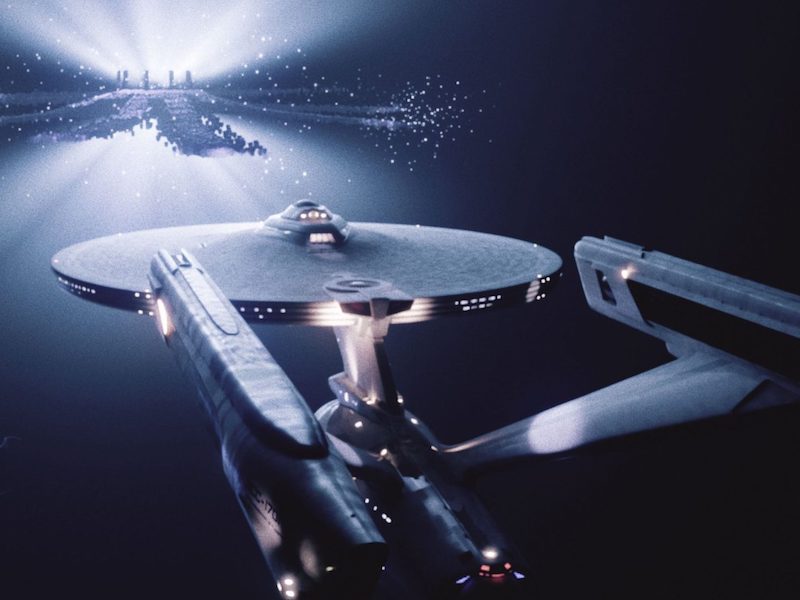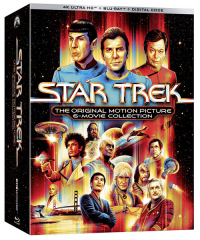Healing or anesthetizing, the distinction doesn’t make much of a difference. And your pointing that out only underscores the ambiguity of that particular bit of business—again, I think cutting it was the right choice. It just didn’t work as intended the way they played it.
The second “viewer off” command did underscore Uhura’s (and everyone else’s) shock, and should have been left in, absolutely. I can’t think of a single editorial decision they made in this edition that I agree with. The only thing I like about it is the high-res rescan of Trumbull’s 65mm VFX shots. They look fabulous in 4K. But that’s cold comfort considering the vandalism of the rest of the cut.
I don’t think the chicken-egg thing is as hard to answer about TMP as it would be about Bladerunner—I had just graduated high school when it was released, and I didn’t really understand the film with the narration at the time. It’s only in retrospect, with the ability to compare Ridley Scott’s subsequent cuts with Alan Ladd Jr.’s hamfisted “improvements,” that I can objectively say the recuts are better. But don’t forget Ladd had years of great films behind him, and he was responsible for bringing George Lucas and his little space movie to Fox. Can’t blame him for trusting his own judgment, even if in hindsight he damaged Bladerunner.
He also hurt (in my opinion) a film I worked on years later. It was originally titled Little Havana and was a love triangle story set in the Miami Cuban exile community. Unfortunately, Robert Redford was making Havana at the time, and Ladd was afraid of confusion, so he ordered a title change. The producers first came up with Distant Shores, and then it was released as Fires Within, but neither of those titles said a damn thing about the story and I thought they were both terrible, even then. Damn shame.
In the case of Bladerunner, all we can do is speculate about it 40 years later. But in the test-of-time department, the recuts have obviously held up much better than the theatrical cut did, and deservedly so. But in fairness, by the mid-Eighties, the film as released was already a cult favorite and highly regarded, and was selling very well on home video. I remember working on a Canadian TV spot, and the producer had me bring my VHS copy to the hotel so we could all watch it—he was nuts about it. We all were. Even hobbled and in pan-and-scan, it was still great.
Yeah, some director’s cuts are just done as an empty and cheap marketing ploy, while others are legitimate cases where directors and their visions got screwed over due to time/hardships/executive meddling.
I first saw BLADE RUNNER in high school, during the late 90s, when it was fully undergoing its rediscovery as a beloved cult film. Knowing that we’d be watching the 1991 Director’s Cut in class, the next day, I actually went and rented the VHS of the theatrical cut (well, the 1982 International Cut, to be precise) so I could watch that, first, and then have a basis for comparison. The next day, after we watched the 1991 cut, I was explaining the differences to my classmates. And, of course, that one-two punch of seeing both cuts within 24 hours (my first viewings of the film, ever) made me fall in love with the film.
I should also note that I missed the theatrical screenings of the Final Cut, back in 2007, and had been kicking myself for 14 years until I finally got to see it (a projection of the 4K Blu-Ray) in a theater, last summer. And it was an amazing experience. Stunningly beautiful.
In the case of TMP, I came to know the SLV best, having grown up with it on VHS. Aside from one TV airing, it really wasn’t until the 2009 Blu-Ray that I became particularly familiar with the 1979 cut.
At the end of the day, the film—in all of its iterations—has most definitely grown on me, over the years. But it’s still highly flawed and compromised. Some things it gets incredibly right, and others incredibly wrong. Yes, it’s a knockoff of “The Changeling”. Yes, it’s a 90-minute TV pilot script that got hastily reworked into a two-hour theatrical feature. Yes, it’s boring. Yes, the characters are off-puttingly out-of-character (which is partly the point of the story, I suppose, but it doesn’t exactly make for the most satisfying watch as a fan of TOS). Yes, it takes itself a bit too seriously.
Yet, it also has that throughline of thoughtful, intelligent, optimistic science-fiction that is at the very core of STAR TREK. And, more importantly, it was an honest attempt to bring STAR TREK back in a big, serious, and respectful way, without reinventing the wheel or tearing down the characters just to replace them with younger knockoffs. The film ends with everyone back in their happy place, and the
Enterprise ready for a new adventure, which is just how it should be. Whatever version appeals most to a particular viewer, that is the consistent element.
Compared to today’s glut of awful, dumb, and disrespectful reboots and remakes, TMP is a masterpiece, and we never knew how lucky we had it. As with many people, THE WRATH OF KHAN is still my favorite, and the best TREK film overall, but TMP gets unfairly maligned, I think. It actually seems to slowly be undergoing a sort of BLADE RUNNER-esque reappraisal, which is nice to see.


